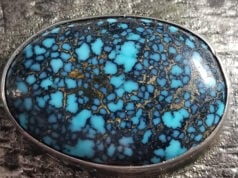Noreena Jasper is a captivating gemstone renowned for its striking patterns and vibrant colors. This unique variety of jasper, often characterized by its earthy tones and intricate designs, has gained considerable attention in the world of gemstones and jewelry. Its allure lies in the distinctive banding and swirling patterns that make each piece truly one-of-a-kind, reflecting nature’s artistry and the stone’s geological history.
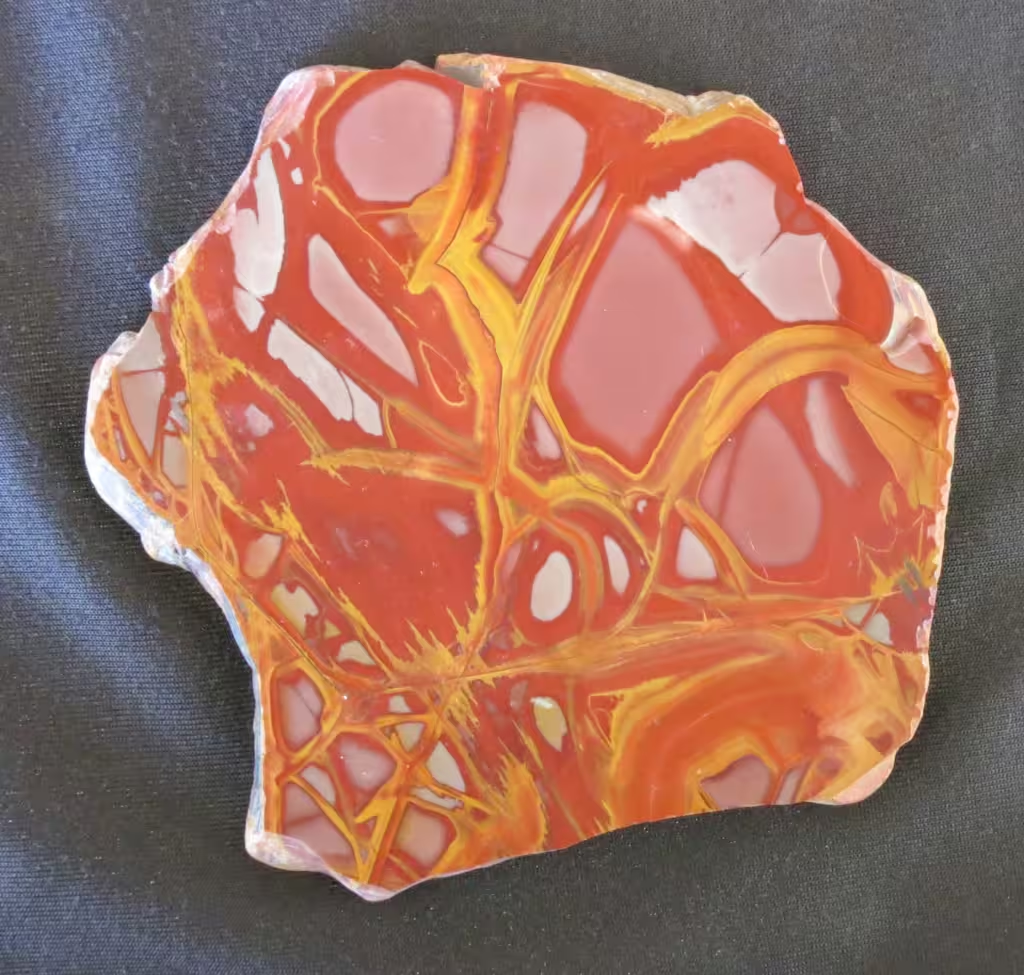
Discovered relatively recently, Noreena Jasper was first unearthed in the remote regions of Western Australia. The gem was named after the Noreena Station, a pastoral property where the stone was initially found. Since its discovery, it has fascinated gem enthusiasts and collectors with its rich array of colors and formations, making it a sought-after material in the crafting of bespoke jewelry and decorative items. Its importance lies not only in its aesthetic appeal but also in its representation of the geological processes that shaped its formation.
Geological Characteristics of Noreena Jasper
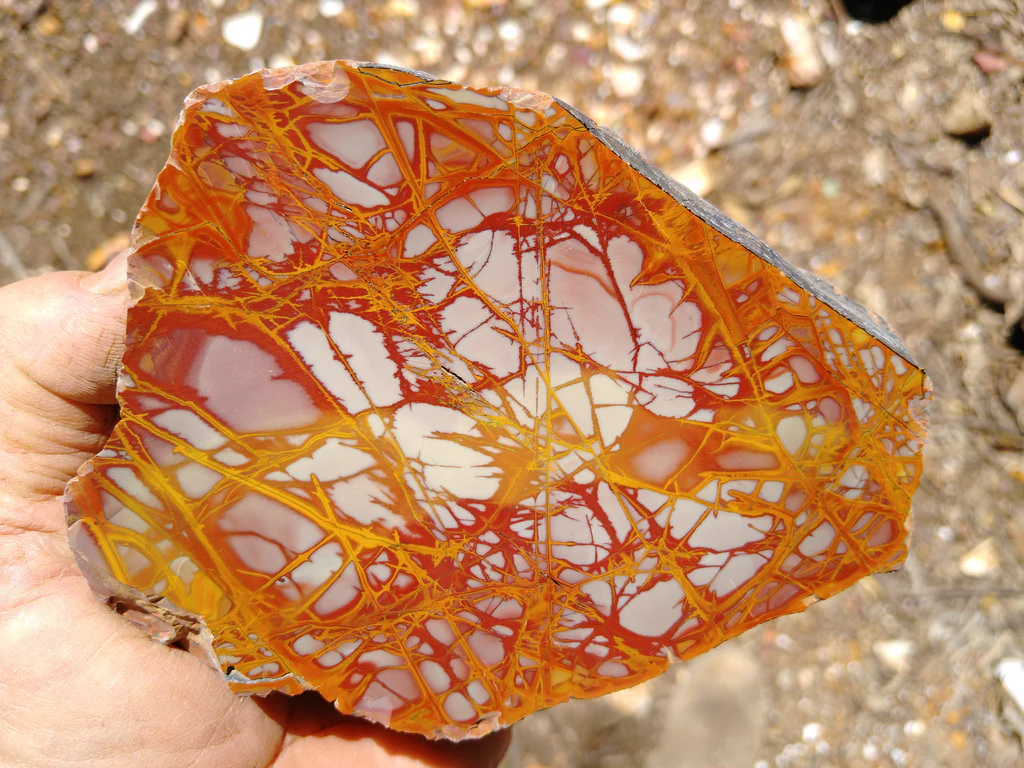
Noreena Jasper is a variety of jasper, which is a type of chalcedony—a mineral composed primarily of silicon dioxide. Its composition is largely similar to other jaspers, with a crystalline structure that contributes to its durability and unique appearance. The primary minerals found in Noreena Jasper include quartz and other silica-based minerals, which give the stone its characteristic hardness and polishability. The specific blend of mineral impurities and trace elements in Noreena Jasper results in its distinctive coloration, which can range from earthy reds and browns to rich greens and creams.
The formation of Noreena Jasper is a result of complex geological processes. Like other jaspers, it forms from the silica-rich fluids that seep into sedimentary rocks or cavities in volcanic rocks. Over time, these fluids deposit layers of quartz and other minerals, which then harden into a solid form. The unique banding and patterns in Noreena Jasper are attributed to variations in the mineral content and the rate at which the silica was deposited. This process, occurring over millions of years, involves the slow crystallization and solidification of the minerals, resulting in the intricate and often striking designs seen in the finished stone.
Physical Properties of Noreena Jasper

Noreena Jasper is celebrated for its remarkable color variations and patterns, which are among its most distinguishing features. The gemstone showcases a rich palette that can include shades of red, brown, green, cream, and sometimes even purple. These colors often blend together in swirling or banded patterns, creating a mosaic of hues that vary from one specimen to another. The intricate designs found in Noreena Jasper are the result of differing mineral compositions and the way these minerals interact as they crystallize.
In terms of hardness and durability, Noreena Jasper ranks fairly high on the Mohs scale, typically around 6.5 to 7. This hardness makes it suitable for a variety of uses, including jewelry and decorative items, as it can withstand daily wear and tear. Its durability is further enhanced by its dense, non-porous nature, which resists scratching and damage relatively well.
The luster of Noreena Jasper is generally described as vitreous or waxy, giving it a smooth, polished appearance that enhances its visual appeal. It is not transparent, as it is an opaque stone, which contributes to its solid, earthy aesthetic. The combination of its lustrous finish and opaque nature helps emphasize the intricate patterns and vibrant colors that make Noreena Jasper so unique and prized in gemstone collections.
Sources and Mining Locations of Noreena Jasper
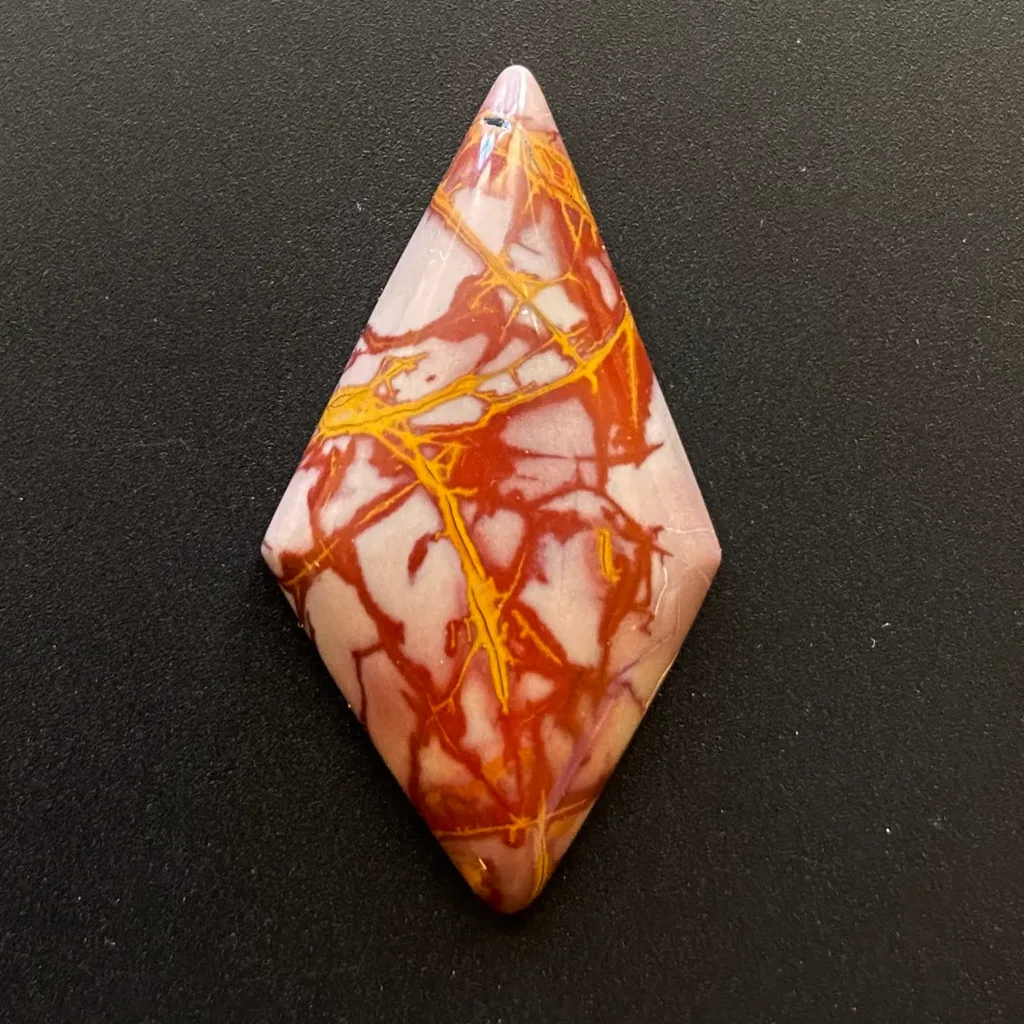
Noreena Jasper is primarily found in Western Australia, a region known for its rich geological diversity. The primary source of this gemstone is the area around Noreena Station, a pastoral property situated in the remote outback of the Pilbara region. This area has become synonymous with Noreena Jasper due to the high-quality specimens that have been discovered there.
The Pilbara region is renowned for its ancient geological formations and mineral wealth. Noreena Jasper forms in the sedimentary layers of this region, where silica-rich fluids have deposited and crystallized over millions of years. The specific conditions of the Pilbara, including its arid climate and geological stability, contribute to the formation of the striking patterns and colors seen in Noreena Jasper.
In addition to Noreena Station, smaller deposits of Noreena Jasper may be found in nearby areas within Western Australia, but the Noreena Station site remains the most prominent and well-known location. The relatively recent discovery of this gemstone has led to its continued exploration and mining in the region, making it a significant part of Western Australia’s gemstone industry.
Uses and Applications of Noreena Jasper
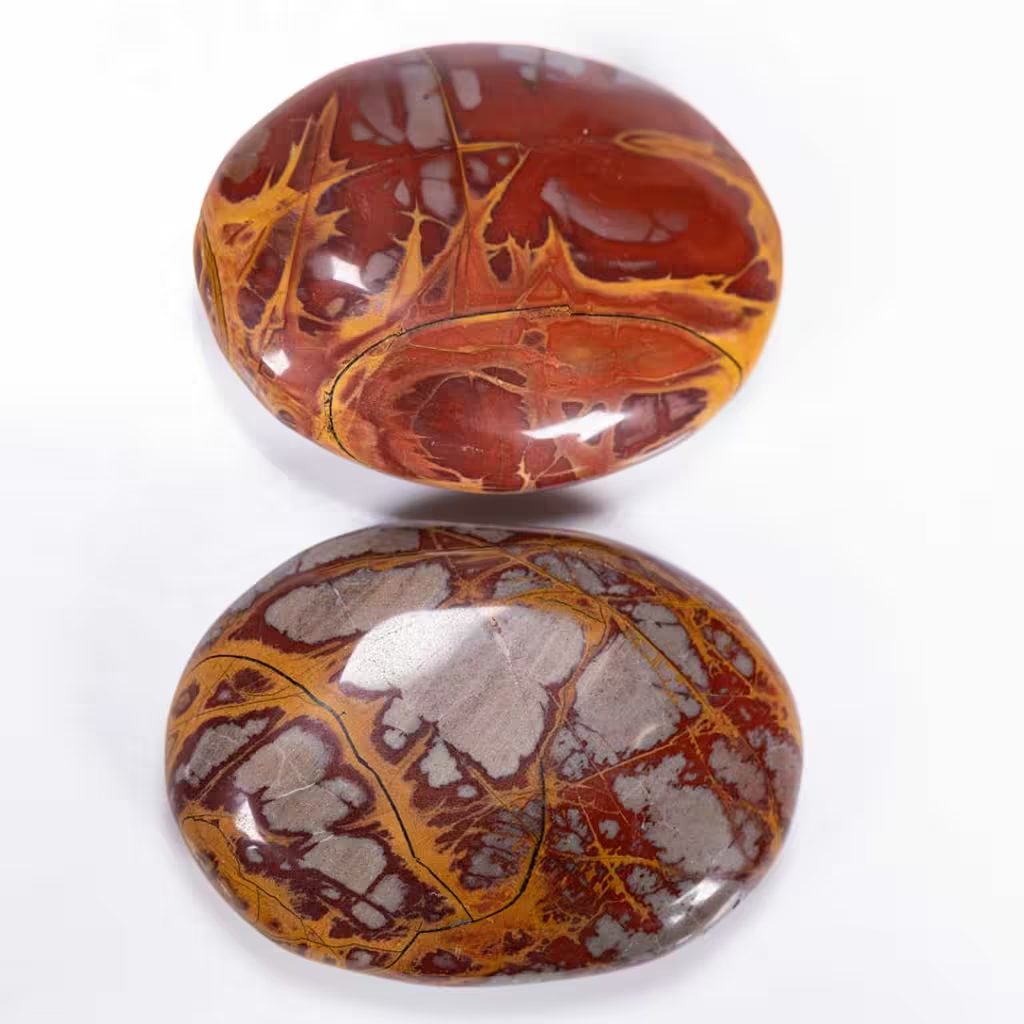
Noreena Jasper is highly valued for its aesthetic qualities, making it a versatile material in various applications. Here are some of the primary uses and applications of this unique gemstone:
- Jewelry: Noreena Jasper is popular in the creation of fine jewelry. Its vibrant colors and distinctive patterns make it an attractive choice for pieces such as rings, necklaces, bracelets, and earrings. The stone is often cut into cabochons or beads to highlight its natural beauty and is used in both custom and mass-produced jewelry.
- Decorative Items: Due to its striking appearance, Noreena Jasper is frequently used in crafting decorative items. This includes items such as ornamental carvings, paperweights, and figurines. Its unique patterns lend an artistic touch to these objects, making them prized for display.
- Stone Inlays: Noreena Jasper is also employed in inlay work, where pieces of the gemstone are set into other materials like wood, metal, or resin. This technique is used to create intricate designs in furniture, accessories, and other custom items.
- Collectibles: Collectors appreciate Noreena Jasper for its rarity and distinctive characteristics. Specimens are often sought after by mineral collectors and enthusiasts who value the stone’s geological significance and unique patterns.
- Healing and Metaphysical Uses: In the realm of metaphysical and alternative healing practices, Noreena Jasper is believed to have grounding and stabilizing properties. It is used in various forms such as tumbled stones, pendulums, or crystals in practices aimed at emotional balance and energy work.
Each of these applications benefits from Noreena Jasper’s eye-catching colors and patterns, showcasing the gemstone’s versatility and appeal across different fields.
Cultural Significance of Noreena Jasper
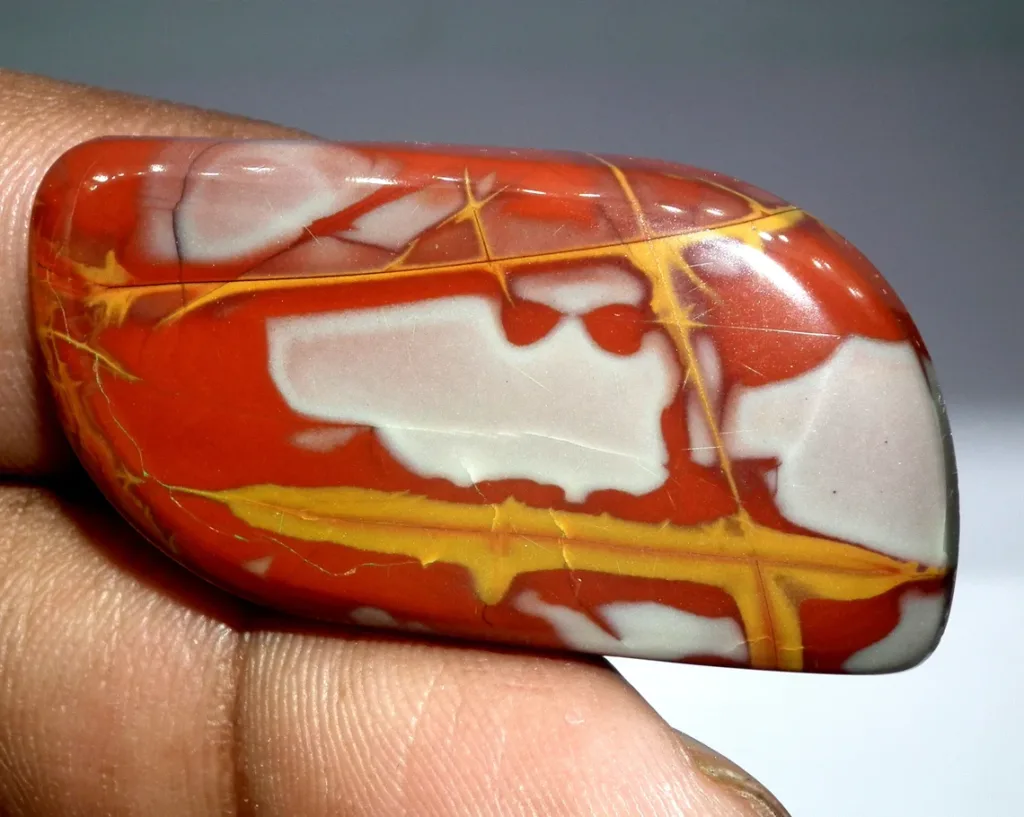
Noreena Jasper holds a range of cultural significances, particularly in the context of its geological and aesthetic uniqueness. Although it is a relatively recent discovery compared to other gemstones, its impact is notable in several areas:
- Indigenous Australian Culture: While Noreena Jasper itself may not have a deep historical significance in Indigenous Australian cultures, the region where it is found—Western Australia’s Pilbara region—is rich in Indigenous heritage. Aboriginal Australians have long revered the land and its natural resources, including various minerals and stones, for their spiritual and practical uses. Noreena Jasper, as a product of this land, connects to the broader cultural appreciation of natural beauty and resources by Indigenous peoples.
- Art and Craft: In contemporary Australian art and craft, Noreena Jasper has gained prominence for its striking visual appeal. Local artisans and jewelry makers use the gemstone to create pieces that reflect Australia’s unique geological features. This incorporation into art and craft supports cultural narratives about the country’s natural heritage and promotes appreciation of its local resources.
- Modern Symbolism: In modern contexts, Noreena Jasper is often associated with qualities such as grounding, stability, and connection to the earth. This symbolic meaning resonates with individuals interested in metaphysical practices and personal growth. As such, it contributes to a broader cultural narrative around the value of natural stones in personal and spiritual well-being.
- Economic and Tourism Impact: The mining and trade of Noreena Jasper also contribute to local economies, especially in the Pilbara region. The gemstone’s discovery has bolstered local industries and tourism, highlighting the region’s natural wealth and attracting visitors interested in gemology and mineral collecting. This economic impact reinforces the cultural value of the gemstone as a symbol of local pride and natural beauty.
Overall, Noreena Jasper’s cultural significance is intertwined with its geological origins, its role in modern artistic expressions, and its contribution to local economies and tourism.





























